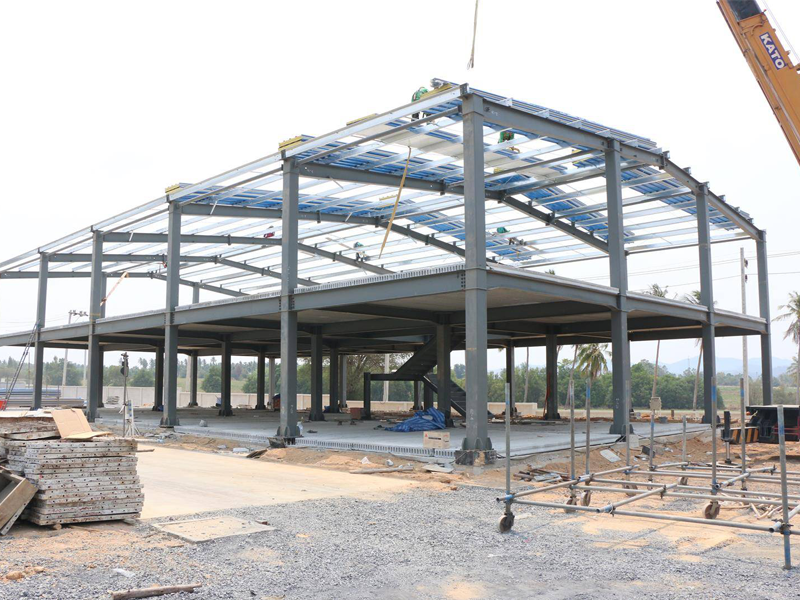CONVENTIONAL STRUCTURE
Conventional Structure refer to buildings that are constructed using traditional building methods and materials. These buildings are typically constructed on-site using a variety of materials such as concrete, bricks, steel, and timber.
Pre Engineered Buildings (PEBs) are custom-made steel structures fabricated off-site and then shipped to the customer’s location for assembly. These buildings have a long life span, are easy to expand or relocate, and require minimal maintenance.


In Conventional Construction, The Building Process Usually Involves The Following Steps:
-
Site preparation: This involves clearing the site, leveling the ground, and excavating the foundation.
-
Foundation construction: The foundation is constructed using concrete or masonry blocks to support the weight of the building.
-
Framing: This involves the construction of the building’s frame using wood or steel beams and columns.
-
Roofing and siding: The roof and exterior walls are constructed using a variety of materials such as metal, shingles, or bricks.
-
Electrical and plumbing installation: The electrical and plumbing systems are installed inside the building.
-
Interior finishes: The interior finishes are added, such as drywall, flooring, and paint.
The Benefits Of Conventional Structure
Familiarity: Conventional construction methods are well-known and widely used, making them a familiar and trusted building method.
Flexibility: Conventional structure can be designed to meet a wide range of design requirements and can be customized to fit specific needs.
Durability: Conventional structure can be built to last a long time, with durable materials and construction techniques.
